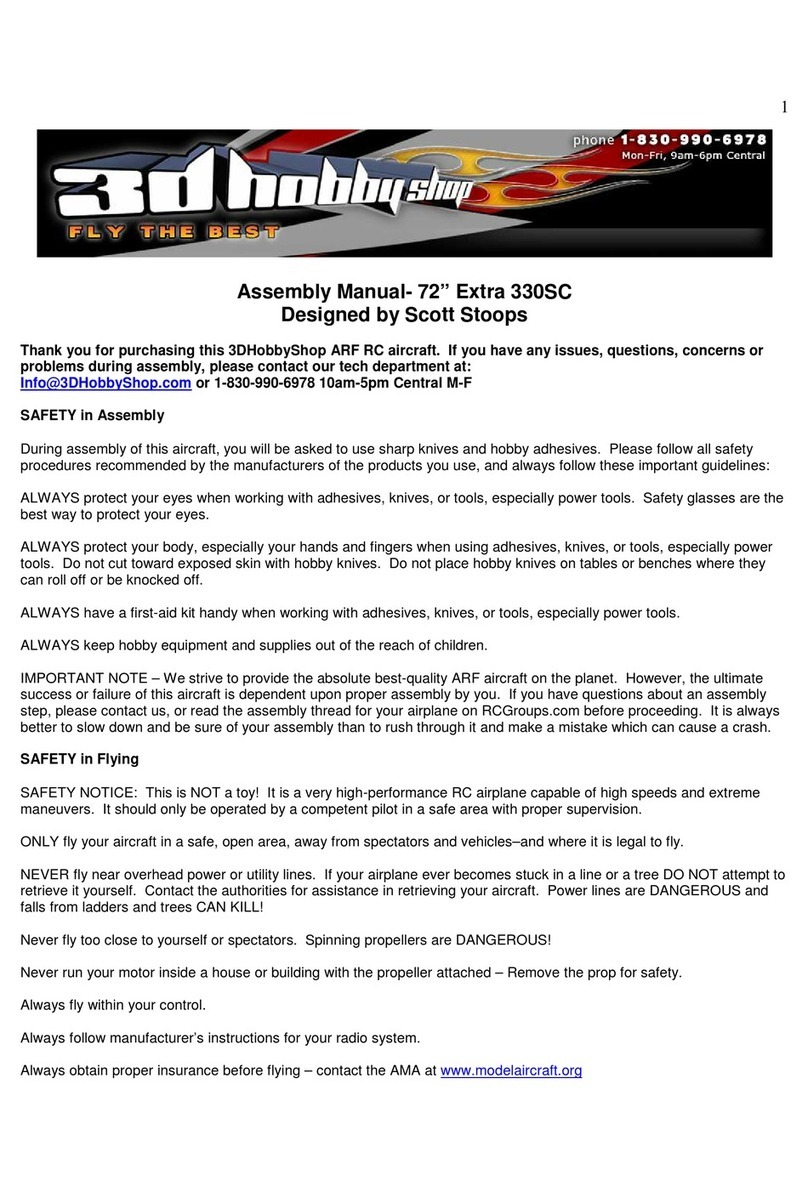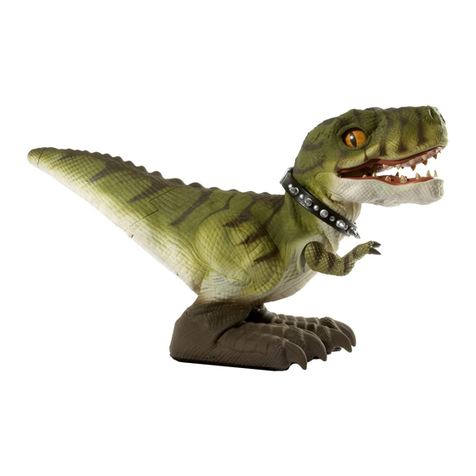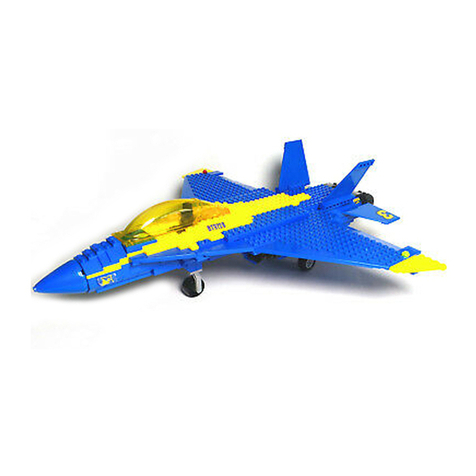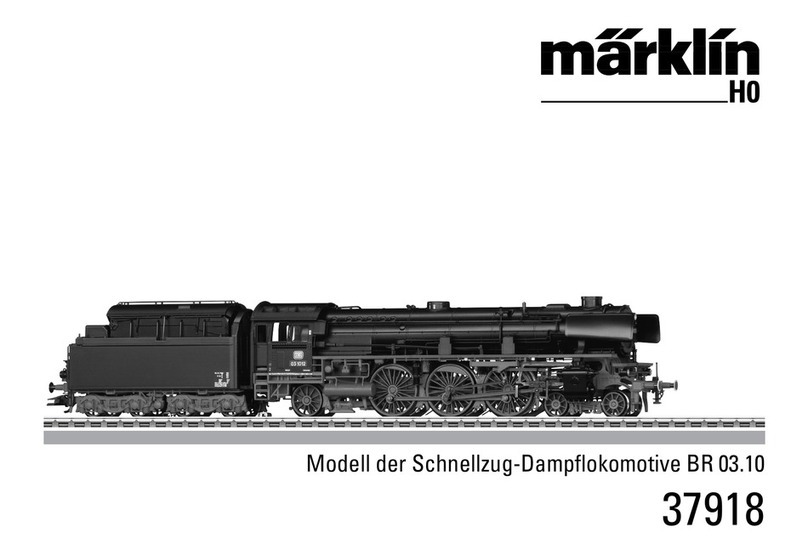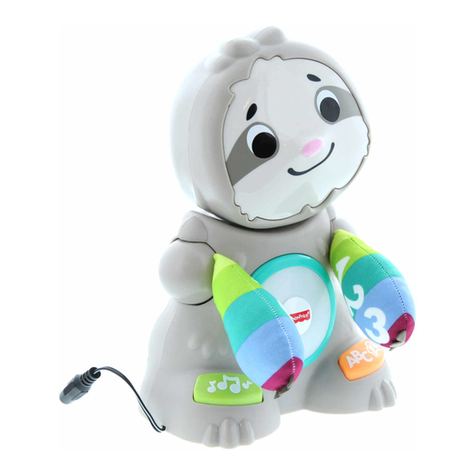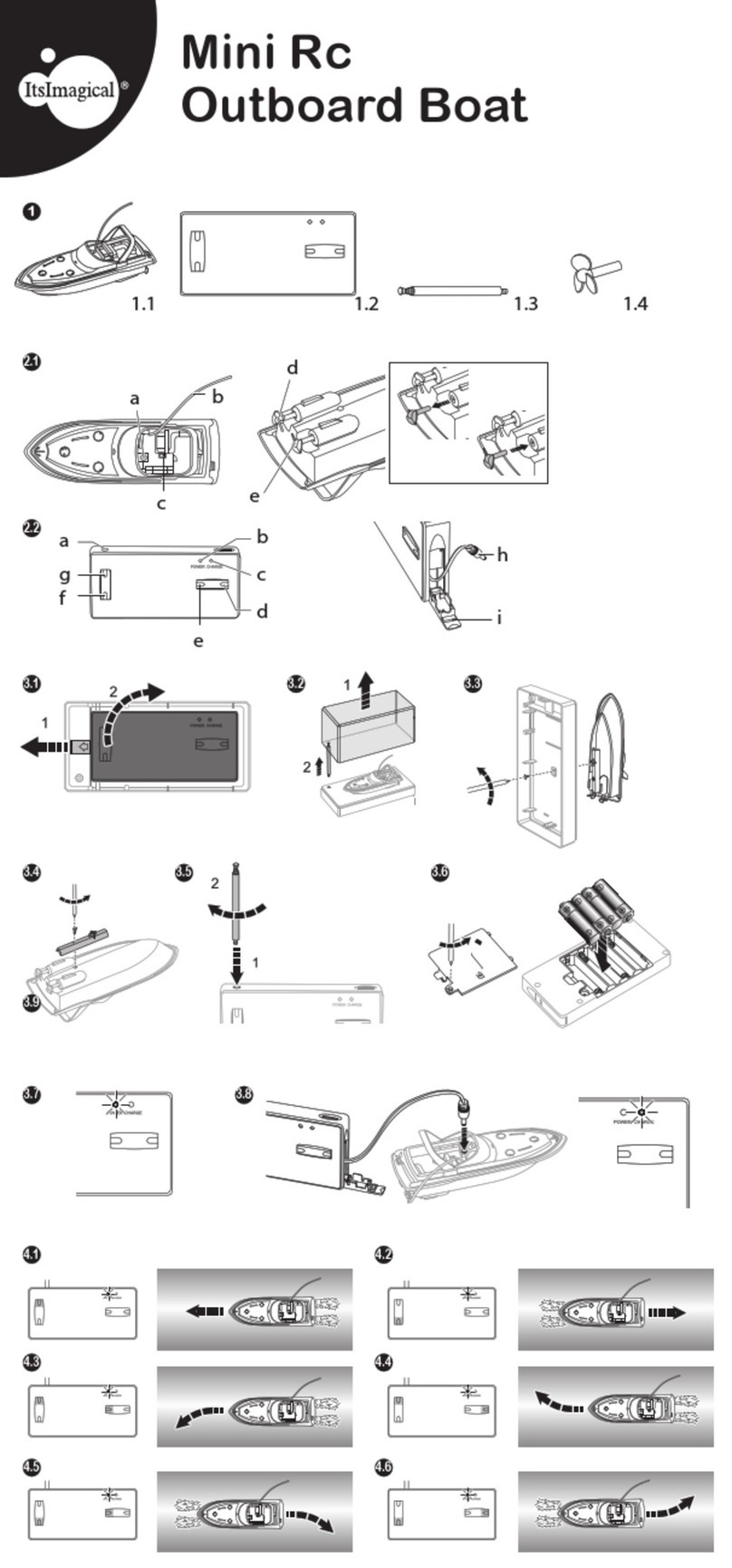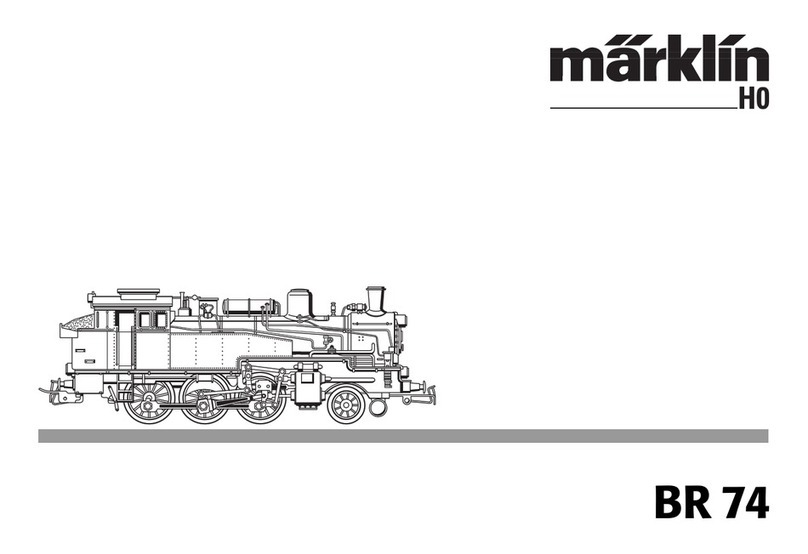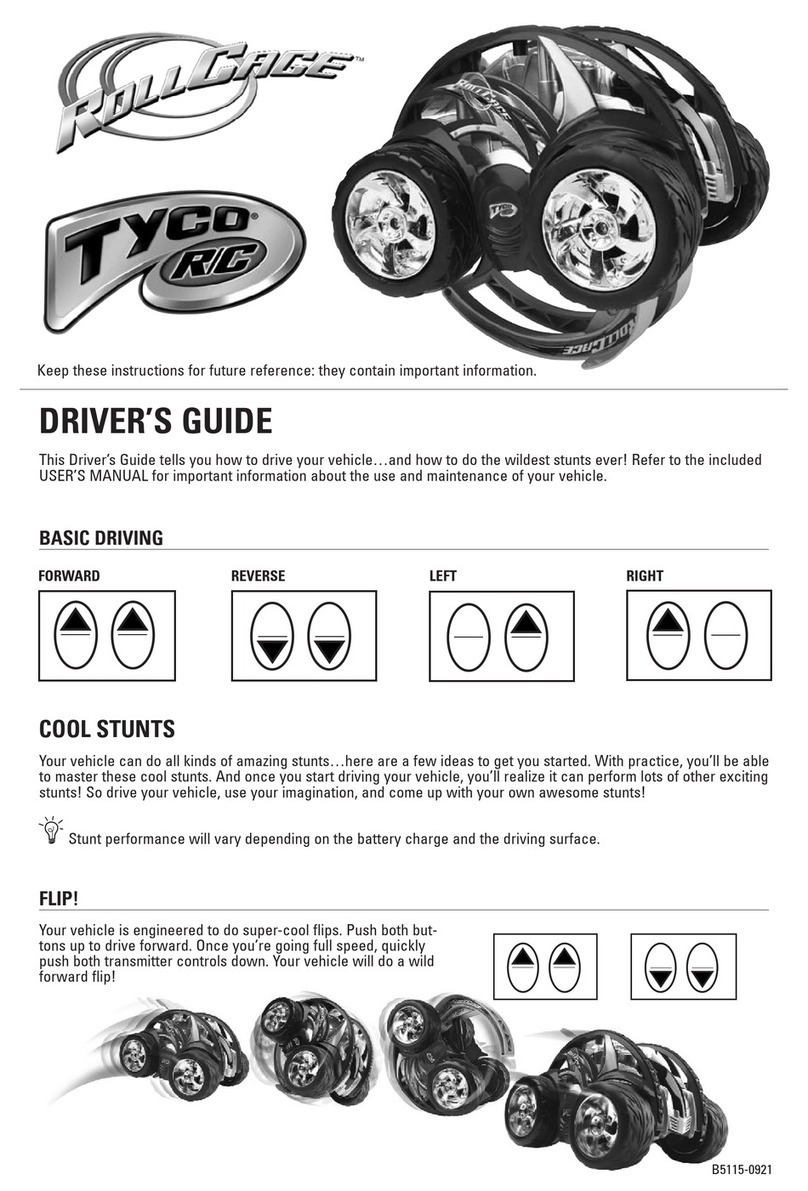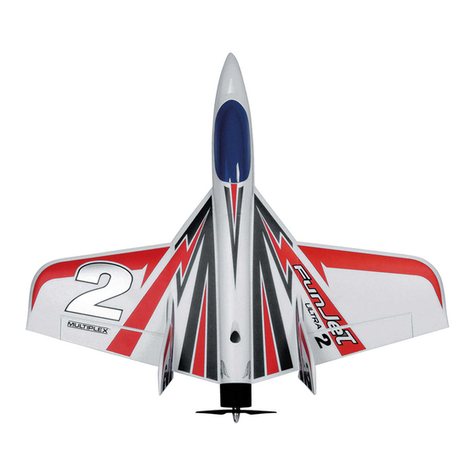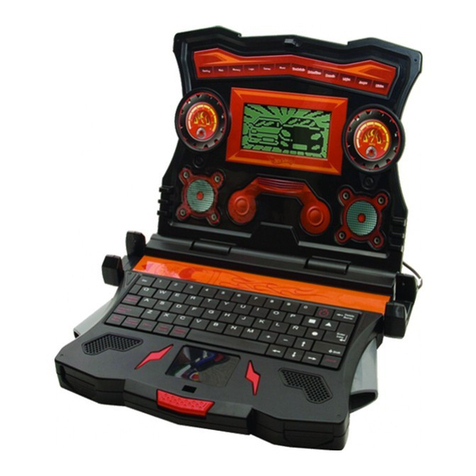Brassmasters EasiChas User manual

Brassmasters
Scale
Models
www.brassmasters.co.uk
EasiChas
Chassis and Detailing Kit for
Bachmann MR/LMS 1F 0-6-0 Tank
Locomotive
For EM and P4 Gauges only
Instructions
Additional components available separately:
Replacement loco splashers for P4
PO Box 1137 Sutton Coldfield B76 1FU
Copyright Brassmasters 2016

Brassmasters Bachmann 1F EasiChas –v 1.0 -1- September 2016
1 Introduction
1.1 The Easichas frames for the Bachmann 1F locomotive, based on the original concept devised by John Brighton, have
been specifically designed to allow easy conversion to EM or P4 gauge, which results in a fully sprung locomotive. Furthermore,
the basic conversion can be completed without the need to solder any of the main components together.
1.2 The kit is designed to cover the locomotives that had replacement frames, and the numbers on the Bachmann models
are all from these engines. It is possible to use the kit for the earlier frames and there is a half-etched line on the inside of the kit
frames to show the profile of these. The keep plate is also designed to accommodate the earlier frames. However, the builder
will need to provide new firebox sides and a large part of the original Bachmann chassis block will show below the frames.
There are other minor differences including a curved front edge to the frame above the footplate.
The locomotives with replacement frames were:
1661, 1686, 1698, 1699, 1702, 1708, 1709, 1710, 1711, 1712, 1720, 1724, 1725, 1726, 1734, 1736, 1739, 1745, 1746, 1749,
1752, 1753, 1754, 1763, 1773, 1777, 1803, 1804 (all with 40000 added under BR).
1.3 There are various levels of conversion with the builder choosing which, of any, additional detail is required beyond the
basic conversion.
1.4 Basic level of conversion makes use of:
fold-up mainframes, keep plate and ashpan with sprung bearings
1.5 Further components are provided to add to the detail of the conversion. These are, working from the front:
buffer beam brackets front and rear that support the sandboxes
replacement coupling rods
replacement brake hangers and blocks
replacement brake pull rods and brake shaft
replacement bunker coal rails
1.6 Unfortunately, it is not possible to re-use the Bachmann loco pick-ups on this EasiChas. A suggested method for
making pick-ups for the loco has been given, which has worked very successfully on the test build, although there are many
other methods which the builder may prefer to use.
1.7 Suitable wheels are available from Alan Gibson, Ultrascale and Markits. Alan Gibson do a standard replacement wheel
pack using 3mm axles. This allows re-use of the original gear wheel without modification. Ultrascale and Markits use 1/8” axles,
which means that if these wheels are used, the gear wheel will require drilling out (a relatively easy task and can be done using
hand tools). If using Ultrascale or Markits wheels, the bearings in the kit will need to be returned to Brassmasters, who will
replace them with a 1/8” set.
2 General Notes
2.1 There is just one etch for the EasiChas and detail. Numbers shown in square brackets [ ] in the instructions refer to the
etch. The part number appears on the etch diagram at the end of these instructions. Certain parts, e.g. bolts, wire, springs, are
not numbered.
2.2 Some of the parts are small and easily damaged, so do please take care. Parts should be removed from the sheets as
and when needed by use of a small scalpel etc., and the tabs and etch cusp removed with a small fine-cut file.
2.3 All folds and bends are made with the half-etched line on the inside unless otherwise stated.
2.4 On some parts it is necessary to emboss rivet / bolt heads from the reverse sides by use of a punch.
2.5 There are half-etched test rivet holes on the back of the etch edging strip. Use these to get used to forming uniform
rivets.
2.6 You should look at instruction 5.1 regarding pre-preparing the wheels before commencing building.
2.7 User guide
We have created a user guide on our website –www.brassmasters.co.uk. In which we have taken advantage of the medium to
provide more detail than we can include in traditional paper-based Instructions. In particular, it includes selected prototype
photographs which are quick and easy to view. We hope you will find this new way of presenting our instructions helpful when
building your model, and welcome your comments on it. It is an excellent way to familiarise yourself with the kit, particularly
since the constructional photographs are reproduced to a much larger size than those included below. The close-up pictures of
the preserved 41708 should be particularly helepful.

Brassmasters Bachmann 1F EasiChas –v 1.0 -2- September 2016
3 Before you start
3.1 Tools Required
A selection of cross head and normal miniature screwdrivers
Small pliers
Small plastic bags and labels to identify parts and screws when dismantling
Small files
Soldering iron (for electrical connections)
A steel rule
Back to Back wheel gauge
Plastic solvent, superglue and epoxy resin (24 hour and 5 minute)
3.2 In all cases bag and label all small parts and source of screws as soon as removed (they are all different) - trust us on
this one!
4 Dismantling the Locomotive
4.1 Unscrew the front and rear screws, pull the chassis vertically to remove it from the body.
4.2 To remove the keeper plate (with brakes attached), remove the remaining screws to allow the keeper plate to be
removed and remove the wheels. Remove the glued-on sandboxes (by twisting with pliers) and sand pipes from the keeper
plate. Store these for use later.
4.3 With the wheels removed from the chassis,
unscrew the machine screws from the wheels and
remove the coupling rods. Put the screws back into
the wheels for safekeeping. The chassis should now
look like the photo. De-grease the chassis sides.
4.4 Hold the centre wheels and with a twisting
pulling motion pull off the wheels from the axle. Also,
slide off the brass bush.
4.5 Place the axle with centre gear in a vice
such that the gear wheel is supported on the vice sides but the axle is loose, tap the axle with a hammer or similar and the gear
wheel will slide off the axle. If you do not have a vice use a pair of pliers on one side of the gear wheel, gently slide the plastic
gear down and off the axle by holding the axle vertical and pressing down. It is very important not to damage this gear.
4.6 You will now have a box of bits and an invalid Bachmann guarantee!
5 Basic loco conversion
5.1 If you are using Alan Gibson wheels you may need to drill
the crankpin holes using a 0.65mm drill. The hole must be
perpendicular to the wheel. The following will prevent problems with
loose crankpins. Countersink the rear of the crankpin screw holes
using a 3mm drill and half screw the 12BA screws home. Using 24
hour epoxy smear the remaining thread and screw the 12BA screws
home. Smear a little epoxy over the head for additional security but
there should not be a big blob that will catch on wheel rotation. Leave
in a warm place for 24 hours to set. This will retain the screws and
stop them from rotating. See photo (before the epoxy was applied) of
a larger diameter but similar wheel.
5.2 Identify all the items within the main frame
[L1], remove them and store them safely. Remove
the loco mainframes [L1] and clean up the residual
tabs with a small file.
5.3 Place the frames flat on the bench and with
a thin metal rule fold to produce a ‘U’ section. Either
again using a ruler or using a strong pair of pliers,
fold up the small sections along the edge of the main
frames at 90 degrees. File off the ‘cusp’ at the end of these top fold sections. Then fold up both end sections making
sure that the bends are at right angles. See Photo
5.4 Ensure the mainframes fit over the original Bachmann
chassis. The frames should sit parallel to the Bachmann frames
and not be ‘splayed’ out at the top. If necessary, file the top strips
back to ensure this. See Photo. Remove the mainframes.
5.5 Check the fit of the brass bearings into the slots in the
mainframes. If tight, using a smooth sharp file lightly file away

Brassmasters Bachmann 1F EasiChas –v 1.0 -3- September 2016
the cusp equally on both of the edges of the slots until the bearing slides up and down with no binding. It is very important that
too much metal is not removed resulting in a sloppy fit –no side play whatsoever is the aim, just a smooth sliding fit.
5.6 Fold up the front mounting bracket [L2] and the rear mounting bracket [L3]. Check that they fit in the recess at each
end of the Bachmann chassis and that the bottom edges will fit flush with the bottom of the chassis block.
5.7 Identify all the items within and
attached to the outside of the keep plate
[L4], remove them and store them
safely. Remove the keep plate [L4].
Fold down the three dummy springs
along each side of the keep plate and
then fold up the two sections between
the leading and middle axles. Finally,
fold the four ashpan tabs down until
they are at 45 degrees to the keep
plate.
5.7 Test fit the keeper plate and the frames to the Bachmann chassis, and then put the two mounting brackets in place and
ensure that the holes line up with those in the frames and keeper plate. Put a 10 BA screw through the holes nearest to the
chassis in the front and back brackets and fit a nut from the bottom. Now fit the assembly to the Bachmann body and make sure
that the holes in the assembly match up with the holes in the body. Any misalignment can be corrected with slight adjustment to
the bends in the brackets, frames and keep plate. The original Bachmann screws are used to mount the body on the frames.
5.8 Unless you are using the replacement etched brake gear, fold up the ‘cups’ on the frame sides and keep plate front
that will hold the Bachmann plastic brake hangers so that they form a flat bottom gentle ‘L’ shape with a slight sloping upright.
IMPORTANT - Carefully examine the bearings as they are not symmetrical. It can be seen that the flange on one side of the
slot is wider than the other side. For EM gauge, the bearings need to be mounted in the frames with the thicker flange towards
the centre of the frames. For P4 gauge, the bearings need to be mounted with the thinner flange towards the centre of the
frames. Increased side-play on the drivers can be obtained by having the thin side of the bearings on the outside or rubbing off
the circular beading round the axle hole. For EM gauge, it will be necessary to file off the raised rim on the inside face of the
bearings to ensure the bearings move up and down freely.
5.9 Again fit the mainframes and
brackets to the Bachmann chassis, place the
bearings in the slots and check for easy
movement. See Photo in section 5.4.
5.10 Temporarily fit the keep plate, using
the 10BA screws and nuts. Ensure the
bearings slide to the bottom of each slot in the
keep plate.
5.11 It is now time to fit the front and rear
brackets to the chassis. Firstly, attach the 10BA nuts over the tops of the holes holding them in place using the 10BA screws (if
soldering, put oil on the threads to prevent the screws being soldered as well). Apply a smear of epoxy or cyocryanolate to the
mating face on the bracket and place in position so that the bottom of the bracket is flush with the bottom on the chassis
(remember, any more than a smear will displace the bracket holes for lining up with the frames and keep plate). (We actually did
this with the frames mounted on the chassis to hold the brackets in the correct position)
The front 10BA screw will foul the screw on the Bachmann body. Either shorten the front
screw level with the top of the nut or remove the Bachmann screw (there are four others
holding the body to the footplate.
5.12 Take the new 3mm axles and test fit them,
firstly in the axleboxes (if tight ream them out to
3mm using a reamer or, if you do not have one, a
small round file, a precision drill or a broach), then
place each through the axleboxes and through the
“slots” in the Bachmann chassis block. If the axles
catch the side of the chassis block, file away the
offending part of the block.
5.13 If you are using Alan Gibson wheels you may
find the axles are slightly over length for P4. They need
to be approximately 22.1 mm long. You will also need to
re-use the Bachmann axle gear wheel. Fit the worm
wheel onto the new axle by gentle pushing the
gearwheel onto the axle, ensuring that the gear wheel is
offset on the axle preferably with the larger shoulder
towards the centreline of the chassis. It is essential that the same amount of axle should be
protruding each side of the chassis when it is fitted because clearances behind the splashers
are small. See photo.

Brassmasters Bachmann 1F EasiChas –v 1.0 -4- September 2016
5.14 Take the axles and file the sharp edges off the end to a rounded profile. Use a drill bit of around 5mm diameter to
chamfer the rear of each wheel axle hole. These two actions help the axle to ‘centre’ in the wheel when they are pressed on.
Mount the bearings on all axles the correct way round, adding any spacing washers required (there will be about 1.2mm
lateral movement on an axle with no washers in 18.83 gauge –so not many washers are required). For both EM and P4 we
suggest one full washer on each side of the leading and trailing wheels. Finally, press the wheels on the axles.
5.15 Press the wheels home with a back-to-back gauge between the wheels. This gauge should be an interference fit
between the wheel backs with no ‘slop’. Ensure this is so by turning each wheel through 90 degrees to check for wobble, and, if
present, twist the wheel. The Gibson axles are a little shorter than the distance between wheel bosses (about 0.25mm each
side) so do not press them fully home. Quarter the wheels with the right hand wheel leading the left hand wheel by 90 degrees.
We do this by setting the driven axle first so a wheel spoke is horizontal on one side and vertical at the other, then each other
wheelset fitted is lined up with the horizontal spoke, the
chassis turned over very carefully, and the spoke on the other
side lined up by eye against those on the driven axle.
5.16 Place the bearing springs over the tongues on the
frames (a small dab of grease on the spring will keep it in
place). Fit the wheelsets into the main frames and attach the
keep plate. See Photo. Check that the motor turns the middle
wheelset with no sign of any binding by applying power to the
motor. Check the wheels spring freely with no binding and
test fit to the plastic body. Remove the springs and put them
safe while working on the rods and checking for free running.
5.17 Glue or solder the two brake shaft
brackets [L5]to the outside of the frame
using a piece of 0.6mm wire to ensure
alignment.
5.18 Push through the four rivets in each
guard iron [L6] and [L7] for the front, [L8]
and [L9] for the rear and form to a slight ‘S’
shape. Glue or solder the front ones inside
the frames at the front (there is a mark on the frames) with the curved face towards
the rear, and the rear ones at the back (again there is a mark on the frames) with the
curved face towards the front.
5.19 Using about a 3mm diameter rod (or an axle or even the shank
of a jeweller’s screwdriver) as a former, curve up the half-etched sides
of the ash pan [L10] and [L11] with the half-etch to the inside.
5.20 If you are going to fit the fully etched version of the brake
blocks and hangers it is easiest to do this now so jump to section 7.3.
Coupling rods
5.21 Fit the Bachmann coupling rods with the six bushes provided.
This will require each hole to be opened up to with a rat-tail round file to
accept the bushes, if you are careful, these can be an interference fit. If
not, the bushes have to be soldered or glued with epoxy centrally in
place and if needed reamed out to take the Gibson crankpin bushes
(see photo).
A finer scale solution is to solder up a new set of coupling rods, but this of course takes longer (see section 7.1).
5.22 Fit the rods and temporarily secure with a piece of
electrical wire sleeve (this does not come unscrewed unlike a
proper 14BA nut! We couldn’t find any for the photo so it had to be
the 14BA nuts) The rod with the joint (as Photo) is the trailing rod
on both sides. Check that all the wheels now turn without binding
when power is applied to the motor and are quartered correctly.
5.23 Fit the six springs above the axleboxes to achieve a fully
sprung chassis. Even though theoretically impossible, the front
springs can disappear from a completed loco. A drop of 5 minute
epoxy at their extreme top where they bear onto the chassis will
secure them –trust us on this one!

Brassmasters Bachmann 1F EasiChas –v 1.0 -5- September 2016
Electrical pick-ups
5.24 It is not possible to re-use the Bachmann pick-ups so you will
need to fabricate your own. Many modellers have their own ideas on
pick-ups; this is how we do it. Using a copperclad sleeper (cut to fit
between the keeper plate springs) and 33 swg phosphor bronze wire (not
supplied but available from Eileen’s Emporium), wind a ‘spring’ shape
with extended end. We clamp a fine screwdriver in the vice and, holding
the wire one end in the fingers and the other in a pair of round nose
pliers, form the spring round the screw driver shaft. Note one pickup is wound clockwise, one anti-clockwise. Solder to the
copperclad (gapping it after soldering) as per the photo.
5.25 Glue the pick-ups to the chassis keeper plate
in the position shown in the photo so they gently press
onto the wheel flanges. Test the polarity and direction
of travel with another loco and connect together with
brass wire and to the motor with wire. Test run with and
without the body fitted. When happy, remove the
temporary crank pins, shorten the bushes and fit the
crankpin bushes (note, if you are going to fit new
coupling rods as per section 7.1 do NOT shorten the
bushes). Note: the photo is of a similar arrangement
on a different loco.
5.26 Re-fit the loco body.
Brakes
5.27 There are several options for the brakes. The simplest is to re-use the
plastic brake blocks, brake pull rods and the brake shaft. The next is to use the
plastic brake blocks with the etched pull rods and brake shaft components, or
finally the replacement etched brake gear. For the second or third options please
see section 7.3. The simplest method is shown below.
5.28 Carefully cut the brake blocks and brake shaft, complete with pull rods,
off the Bachmann keeper plate by sawing next to the main part of the centre solid
section. See photo.
5.29 Clean up the cut line on the plastic brake hangers to ensure there are
no raised edges and if necessary shorten the plastic hanger back ‘studs’ (that fit in the ‘cups’) so they line up with the wheel
treads. Remember the chassis is sprung and the wheels will move upwards under the loco weight. Drill a 0.6mm hole in the
centre of the brake shaft part way through from the cut edge.
5.30 The brake shaft can be
assembled as detailed in 7.2 or simply a
piece of 0.6mm wire threaded through
the holes in the brake shaft brackets
and fixed in place, so that about 3mm
protrudes each side.
5.31 Attach the front brakes only
to the brake hanger saddles on the keep
plate using cyanoacrylate glue or epoxy
resin.
5.32 Carefully fit the keep plate to
the frames flexing the rigging so that the
middle and trailing brake blocks rest in
their saddles on the frames, and push
the plastic brake shafts over the
protruding 0.6mm wire through the
brake shaft brackets.
Balance weights
5.33 There two types of wheel balance weights, a block type and a crescent type. Check photographs of your chosen loco
and decide which type are fitted to which wheel (they were mixed on some locos).
5.34 Carefully remove and clean up with a file the required balance weights (block type driving wheel [L12], block type
leading and trailing [L13], crescent type driving [L14], crescent type leading and trailing [L15]) and then attach these to the
wheels using cyanoacrylate glue or epoxy resin, again using photos as a positioning guide (see www.rail-online.co.uk for a
selection of photos).

Brassmasters Bachmann 1F EasiChas –v 1.0 -6- September 2016
Sandboxes
5.35 The Bachmann sandboxes are the correct shape, although the fillers should be offset
towards the wheels slightly (0.3 mm). These can be simply refitted to the frames or, if fitting the
buffer beam brackets (see section 7.4), fitted to these.
5.36 Grip the sand pipes with a pair of pliers and remove them from the sandboxes. Straighten
the end where it went into the sandbox. Drill a 0.7 mm hole in the bottom of the box 2 mm from the
rear edge and on the centre line for the sand pipe.
5.37 The sandboxes need spacing off the frames. Cut a piece of 0.4 mm plastic strip and a
piece of 0.25 mm plastic strip 6 mm long and attach to the back of the Bachmann sandboxes using
cyanoacrylate glue, epoxy resin or butanone. File the plastic spacer to the same shape as the
Bachmann sandboxes.
5.38 Attach the sandboxes to the frame using cyanoacrylate glue or epoxy resin. They are positioned so that the top of the
sandbox is level with the bottom of the slots in the frame, the front box being 2 mm from the front edge of the frames and rear
box being just under 4 mm from the back edge of the frame. Note: the plastic strip will need cutting back on the rear boxes
to clear the brake shaft bracket.
5.39 Refit the Bachmann sand pipes or make new ones from 0.7mm wire.
5.40 Fit the frames to the loco chassis and then screw the keep plate into place using the 10BA screws, then fit the
assembly to the loco body and screw into place using the original Bachmann screws.
5.41 And that is the basic EasiChas complete.
6 Not used
7 Additional components
The following additional items are provided in the kit and may be used if the builder requires.
7.1 Replacement coupling rods
7.1.1 Each side is manufactured from four etches and hinged behind the centre crank pin. There are also overlays for the
bosses. The left hand side and right hand side rods are the same.
7.1.2 Cut one pair of leading coupling rods from fret [L16 & L17].
7.1.3 Open the crankpin holes using a 1.5 mm drill. When complete drill a hole using
the same size drill perpendicular in a scrap piece of wood. Leave the drill in the hole in
the wood. Tin the mating surfaces of a pair of coupling rods and place over the drill. This
holds one end of the rods accurately ready for soldering. It is critical to align the two
halves exactly in order to make one rod so take some time tweaking. See photo.
7.1.4 Place a little flux along the top surface of the rod and apply heat; the solder on
the soldering iron will run down between the rods and join them. The secret is to apply
only a little solder at a time. Solder will fill the “cusp” and give the impression of a solid
rod. See photo left. Repeat for the whole length of the rod.
7.1.5 Next cut one pair of trailing coupling rods [L18} and [L19] and assemble in the
same way keeping the forked end clear of solder.
7.1.6 Repeat for the other leading and trailing rods.
7.1.7 There are two different boss overlays for the front rods and another two for the rear rods. Working from the front of the
locomotive, half-etched boss overlays [L20] are fitted to both the inside and outside of the front coupling rod boss and half-
etched large bosses [L21] are fitted to the inside and outside of the front of the centre boss. The half-etched fork overlays [L22]
are fitted to the inside and outside of the forked end of the back rod. Finally, half-etched boss overlays [L20] are fitted to the
inside and outside of the trailing end boss. Using the appropriate bosses, apply each boss holding it in place with a cocktail stick

Brassmasters Bachmann 1F EasiChas –v 1.0 -7- September 2016
and solder in place using the same technique as for joining the rods. Clean up each rod with files. Carefully blend the bosses
into the front face of the rods.
7.1.8 The rear length of each rod has a knuckle joint to be manufactured.
The front and rear rods are joined with a short length of 0.9 mm nickel silver
wire pushed through from the front and then cropped back on the rear.
leaving about 0.5 mm proud. See photo.
7.1.9 To stop solder flooding the joint apply a little oil to the surfaces not
to be soldered - this will prevent the solder running into the joint. Keep the rear of the rod clean. Solder can then be quickly
applied with a very hot iron to the back of the rod to fix the wire in place. Clean off excess solder leaving enough to keep a
strong joint. See photo above of completed rods.
7.1.10 Repeat for the other rods on the other side of the loco, using the same part numbers.
7.1.11 Open up the crankpin
holes so that the crankpin bushes
will rotate in the rod. This can be
done with a reamer, broach or a
fine Swiss file
7.1.12 Fit the rods to the wheels
and test run. A comparison
between the Bachmann rods
(lower) and the replacements is
shown in the photo.
7.2 Brake shaft
Note: it is possible to remove the keep plate if the fitting brake shaft as the bends in the frames and keep plate have
been designed to allow this.
7.2.1 The brake shaft can be made up with or without the handbrake lever and the steam brake lever between the frames,
and either with the original Bachmann outer brake shaft and brake pull rod levers or replacement ones.
7.2.2 Cut a piece of 0.6 mm wire 22 mm long.
7.2.3 If not fitting the handbrake lever and steam brake lever, cut a piece of 1.2 mm
tube to fit between the brake shaft brackets on the frames. Insert between the frames,
feed the 0.6 mm wire through one frame, through the tube and through the other frame,
soldering all in place with an equal amount of 0.6 mm wire protruding each side.
7.2.4 If fitting the hand brake lever, cut two pieces of 1.2 mm tube 11 mm and 2 mm
long.
7.2.5 Starting from the brake shaft bracket on the left hand side looking forwards, put
the piece of 0.6 mm wire through the bracket, then slide over the inner end of the wire the
spacing washer [L23], then the half-etched washer [L24], then the handbrake lever [L25],
then the 11 mm length of 1.2 mm tube, then the steam brake lever [L26]. File the 2mm length of tube to fit between the steam
brake lever and the other brake shaft bracket. Finally push the 0.6 mm wire through the short length of tube, and then through
the brake shaft bracket on the other side of the frame. Ensure the steam brake lever is the correct way up.
7.2.6 Take the two handbrake pull rods [L27] and [L28] and open out the
holes to clear 0.5 mm wire. Then fold the half-etched top piece of [L27] back on
itself on the opposite side to the full etched piece. Drill a 0.5 mm drill vertically
into a piece of scrap wood then first place [L28] over the drill with the full etched
piece upwards and then [L27] with the full etched piece downwards, align the
two on top of each other and solder together.
7.2.7 With the handbrake lever orientated so that the fold over top section is
adjacent to the nearest frame, put an over length piece of 0.6 mm wire through
the handbrake pull rods and the hand brake lever, adjust the rod and lever angle
as shown in the diagram and attach the handbrake lever to the frame (the top of
the lever should be level with the bottom edge of the slots in the frame for the
buffer beam brackets and should rest against the edge of the guard iron).
7.2.8 Attach the steam brake lever to the underside of the frame cross
piece.
7.2.9 Ensuring that an equal amount of 0.6 mm wire is protruding either side
of the frames, solder the wire, tube and levers in place. Solder the wire through
the joint in the handbrake lever and trim back both sides.
7.2.10 Open out the holes in the pull rod levers [L29] and pull rod lever spacers [L30] to 0.6 mm.

Brassmasters Bachmann 1F EasiChas –v 1.0 -8- September 2016
7.2.11 Drill a 0.6 mm hole vertically in a piece of scrap wood. Insert a piece of 0.6 mm wire and then place over the wire a pull
rod lever [L29], a pull rod lever spacer [L30] and another pull rod lever [L29]. Using a piece of 0.6 mm wire in the smaller hole to
align the two parts of the lever, solder the pull rod lever together. Repeat for the second lever.
7.3 Replacement brake blocks and hangers
7.3.1 The plastic brakes are rather nicely moulded. However metal replacement brake hangers can be fitted if the Bachmann
brake hangers are lost or a metal replacement is preferred. Remember plastic does not produce an electrical short and the
wheels are sprung., so move vertically!
7.3.2 If fitting the etched replacement brake hangers/blocks, the brake gear needs to be removable otherwise it is impossible
to remove the wheels.
7.3.3 Take the brake hangers [L31] and the left hand brake block overlays [L32]. Open up the holes in the top, middle and
bottom of the brake hangers, the top to clear 0.5 mm wire, the middle to clear 0.7 mm wire and the bottom to clear 0.6 mm wire.
7.3.4 Solder together the brake hangers [L31] and the left hand brake block overlays [L32], utilising a short piece of 0.7mm
wire in the centre hole to assist alignment. Trim the wire to length. Repeat for the right hand brake hangers using parts [L31]
and [L33].
7.3.5 Remove the wheels and EasiChas from the Bachmann chassis
block. Cut and file off the ‘saddles’ that would have been used to re-fit the
plastic Bachmann brakes on the frames and remove the two forward
extensions that support the saddles on the front of the keeper plate.
7.3.6 Attach three pieces of 0.5 mm wire to form the support wires across
the mainframes using the holes provided protruding and equal amount (at
least 5 mm) beyond the frames on both sides. If using the later type of brake
hanger bracket, slide the brake hanger bracket inner etches, [L34] for left
hand side, [L35] for the right hand side, over the wire and solder to the
frames with the vertical longer face leading (see photo in 7.3.23).
7.3.7 Cut six short pieces (around 1.0 –1.5 mm) of 1.0 mm tube. Slide
one piece onto either side of the leading support wire
7.3.8 Place a brake hanger/block on each side of the leading wire and
position them the correct distance in to suit the wheels you are using. Slide
the tube up to the brake hanger/block. Remove the brake hangers and solder the tube to the wire. Repeat for the centre and
trailing wheels.
7.3.9 Cut three pieces of 0.6 mm wire 28 mm long to form the brake tie
bars.
7.3.10 There are two ways now to attach the brake hanger assemblies to
the brake tie bars (not the support wires).
7.3.11 The easiest is to make up a jig from a piece of wood, plastikard etc.
the same distance across as the outside measurement of the tube soldered
to the support wires in 7.3.8.
(We used a piece of wood with the ends squared off, with the brake hangers
held in place with blu-tac).
7.3.11.1 One of each hand of brake block is then attached to each side of the jig with the bottom end protruding beyond the jig.
7.3.11.2 A length of 0.6 mm wire is then put through the holes in the bottom of the brake block assembly, with an equal amount
protruding each side. Solder the wire in place.
7.3.11.3 Repeat for the other two brake block/tie bar assemblies.
7.3.12 The less easy way is to assemble the brake block/tie bar assemblies in position.
7.3.12.1 This is done with the wheels in place. If you get flux on the treads of the wheels they will rust –we protect them with a
thin piece of masking tape during this process.
7.3.12.2 With the frames upside down, position the two brake hangers on the leading support wire. Slide a piece of 0.6 mm
wire through the bottom hole of both brake hangers.
7.3.12.3 Holding one of the leading brake hangers vertically resting against the wheel, solder it to the 0.6 mm wire (not to the
brake hanger cross wire). Repeat for the other side.
7.3.12.4 Repeat for the other two brake block/tie bar assemblies.
7.3.13 Check that the brake hangers are in the correct position across the face of the wheels. If not, adjust either the 0.6 mm
tie bar or the small piece of tube on the cross wire, or both.

Brassmasters Bachmann 1F EasiChas –v 1.0 -9- September 2016
7.3.14 Having made sure that there is a good soldered joint between the cross wire and the frames, with a piercing saw cut
the brake hanger wire between the frames. As long as the first cut is made with a saw, the wires can then be trimmed back with
cutters. Note –the first cut must not be made with cutters.
7.3.15 Take the two brake pull rods [L36]
and [L37] and attach the leading and centre
pull rod overlays [L38] to the inside of the pull
rod (the inside is the side which has a part
half-etched at the rear end). Attach a rear pull
rod inner overlay [L39] to the inside of the pull
rods and a rear pull rod outer overlay [L40] to
the outside of the pull rods. Drill out all the
holes 0.6 mm.
7.3.16 Place the two brake pull rods
over the tie rods on each side of the
brake blocks and adjust sideways to give
sufficient clearance so as not to touch the
wheels when they are at the limit of their
sideplay. Pull the leading tie rod forwards
to give sufficient clearance between the
brake block and the wheel and solder
one of the pull rods to the tie rods.
Repeat for the other side pull rod. If you
are still happy with the clearances, solder
the pull rods to all the other tie rods.
7.3.17 Measure the distance between the frames and the inside of the pull rods.
Cut two pieces of 1.2 mm tube to these lengths less 0.4 mm if no brake shaft
bracket overlays are fitted, or less 0.6 mm if they are.
7.3.18 Take the pull rod levers and cut the 0.6 mm wire to half the length of the
of the 1.2 mm tube and solder the pull rod levers into the tube. Trim the out wire
back flush with the outside of the levers.
7.3.19 Cut back the 0.6 mm wire through the brake shaft to just short of the same
length so that the tube and pull rod levers fit over the wire and but up to the face of
the brake shaft bracket on the frames.
7.3.20 Using two short pieces of 0.5 mm wire, mount the pull rod ends [L41] in the fork of the pull rod lever so that the half
etch part of the pull rod ends are outwards.
7.3.21 Adjust the angle of the pull rod
levers to approximately 15 degrees (see
photos). Solder the half-etched sections
of the pull rod end to the pull rod, then
solder the wire through the joint between
the pull rod end and the pull rod lever.
Do not solder the tube to the frames.
Repeat for the other side.
7.3.22 The early type brake hanger
brackets (outer only) were not included
on the main etch. These will be provided
on an additional etch.
7.3.23 Finally attach the brake hanger bracket outer etches. For the early type, [E1] for the
left hand front and rear, [E2] for the left hand middle, [E3] for the right hand front and rear
and [E4] for the right hand middle. For the later type, [L42] for left hand side, [L43] for the
right hand side. Place over the wire on the outside of the brake hangers and solder in place.
Trim back and file the support wire to the outside of the brake hanger. The brake hangers
should just clip off the ends of the cross wires.
The photo shows the position of the later type brake hanger brackets on a similar loco.

Brassmasters Bachmann 1F EasiChas –v 1.0 -10-September 2016
7.4 Buffer beam brackets
7.4.1 On the prototype, behind each side of the buffer beams are large brackets which also support the sandboxes. These
are slightly different front and back.
7.4.2 Take the front buffer beam
bracket left [L44] and emboss the
rivets through the half-etched holes.
Take the front buffer beam bracket
upright left [L45] and attach to the
front buffer beam bracket at right
angles with the full etch part towards
the front.
7.4.3 Attach the bracket assembly to the slots in the front left side of
the frames. And then attach the front angle strip [L46] to the frame above
the bracket.
7.4.4 Repeat for the other front buffer beam bracket [L47], upright
[L48], and angle strip [L46].
7.4.5 The rear brackets, buffer beam bracket left [L49], buffer beam
rear upright [L50], rear angle strip [L51], buffer beam bracket right [L52],
buffer beam upright right [L50], are assembled and attached in the same
way to the rear of the frames.
7.4.6 Modify the Bachmann sand boxes as in 5.36 but do not add
the plastic strip to the back. Attach them to the underside of the buffer
beam brackets with the circular sandbox filler engaged with the curve in
the edge of the bracket using cyanoacrylate glue or epoxy resin.
7.4.7 Refit the Bachmann sand pipes or make new ones from 0.7mm wire.
7.5 Replacement splashers
7.5.1 The splashers fitted to the Bachmann body are over scale to accommodate 00 wheel flanges. If modelling in P4, a set
of reduced size splashers is available as a separate etch from Brassmasters.
7.6 Replacement bunker coal rails
7.6.1 There are three options provided for in the kit, two for the open cab, and one for the closed cab. These are continuous
with a dropped section for the hand brake handle or gapped for the open cab, and simple replacements for the closed cab.
7.6.2 Whichever coal rails you are using, bending is made easier using
the jig provided.
7.6.3 Take the jig [L53] and file the cusp in the slots in the jig for the
coal rail uprights and also the
circular corner cut-outs.
Mount four pieces of 1.0 mm
wire approximately 5 mm long
vertically in the corners of the
jig. As always, the easiest way to get them vertical is to drill a vertical hole in a
piece of scrap wood and insert the wire in this whilst soldering to the jig. There is
sufficient wire in the kit to allow for this.
7.6.4 For the open cab version, take the chosen
coal rails ([L54] for the dropped section version or
[L55] for the gapped version) and push through the
rivets using the half-etched holes. Position the coal
rails along the back of the jig and curve the corners
around the wire, one corner at a time. Check that the
corner radius is tight and at 90 degrees. We used a
1.0 mm drill to help with this. For the continuous
rails, attach the two ends to each other.
7.6.5 Bend the legs inwards along the rear edge of the coal rail using the half-etched hole as guide. Place the slot in the jig
over the horizontal part of the leg and bend downwards.

Brassmasters Bachmann 1F EasiChas –v 1.0 -11-September 2016
7.6.6 For the closed cab version, utilise the open cab gapped rails [L55]. It will be
necessary to trim back the rails to a suitable length to attach to the cab sides, or bend
round to attach to the cab back. An additional pair of uprights is provided [L56] and
should be added as required to each side of the bunker.
7.6.7 Attach the coal rails to the inside of the Bachmann bunker using
cyanoacrylate glue or epoxy resin.
References
An Illustrated Review of Midland Railway Locomotives Volume 3 –Wild Swan
Midland Railway Locomotives Volume 3 –The Johnson Classes Part 1 –Irwell Press
LMS Review No.2 –Wild Swan
Another excellent source of prototype photographs is www.rail-online.co.uk as shown in the picture below.

Brassmasters Bachmann 1F EasiChas –v 1.0 -12-September 2016
Etched Component List
L1
main frames
L30
pull rod lever spacer (2)
L2
front mounting bracket
L31
brake hanger (6)
L3
rear mounting bracket
L32
brake block left (3)
L4
keep plate
L33
brake block right (3)
L5
brake shaft bracket (2)
L34
brake hanger bracket inner left (3)
L6
guard iron front left
L35
brake hanger bracket inner right (3)
L7
guard iron front right
L36
pull rod left
L8
guard iron rear left
L37
pull rod right
L9
guard iron rear right
L38
pull rod overlay inner front and centre (4)
L10
ash pan side left
L39
pull rod rear overlay rear inner (2)
L11
ash pan side right
L40
pull rod rear overlay outer (2)
L12
balance weight block type - driving
L41
pull rod end (2)
L13
balance weight block type - leading & trailing
L42
brake hanger bracket outer left (3)
L14
balance weight crescent type - driving
L43
brake hanger bracket outer right (3)
L15
balance weight crescent type - leading & trailing
L44
buffer beam bracket front left
L16
coupling rod leading left hand (2)
L45
buffer beam bracket front left upright
L17
coupling rod leading right hand (2)
L46
front angle strip (2)
L18
coupling rod trailing left hand (2)
L47
buffer beam bracket front right
L19
coupling rod trailing right hand (2)
L48
buffer beam bracket front right upright
L20
coupling rod front and rear boss overlay (8)
L49
buffer beam bracket rear left
L21
coupling boss centre overlay (4)
L50
buffer beam bracket rear upright (2)
L22
coupling rod fork overlay (4)
L51
rear angle strip (2)
L23
brake shaft washer
L52
buffer beam bracket rear right
L24
brake shaft washer half-etched
L53
coal bunker rails jig
L25
handbrake lever
L54
coal bunker rails with dropped section
L26
steam brake lever
L55
coal bunker rails with gapped section
L27
handbrake pull rod 1
L56
coal bunker rails upright (2)
L28
handbrake pull rod 2
3 mm washers full thickness
L29
pull rod lever (4)
3 mm washers half thickness

Brassmasters Bachmann 1F EasiChas –v 1.0 -13-September 2016
Other Components
Brass axleboxes (6)
0.6 mm brass wire
10 BA cheese head screws (2)
Axlebox springs (6)
0.5 mm brass wire
10 BA nuts (2)
0.9 mm nickel silver wire
1.0 mm brass tube
4 mm x 0.4 mm plastic strip
1.0 mm brass wire
1.2 mm brass tube
4 mm x 0.25 mm plastic strip
0.7 mm brass wire
Bushes for Bachmann rods (6)
Diagram 1
Other manuals for EasiChas
3
Other Brassmasters Toy manuals

Brassmasters
Brassmasters GWR 3000 User manual

Brassmasters
Brassmasters EasiChas User manual

Brassmasters
Brassmasters BULLDOG User manual
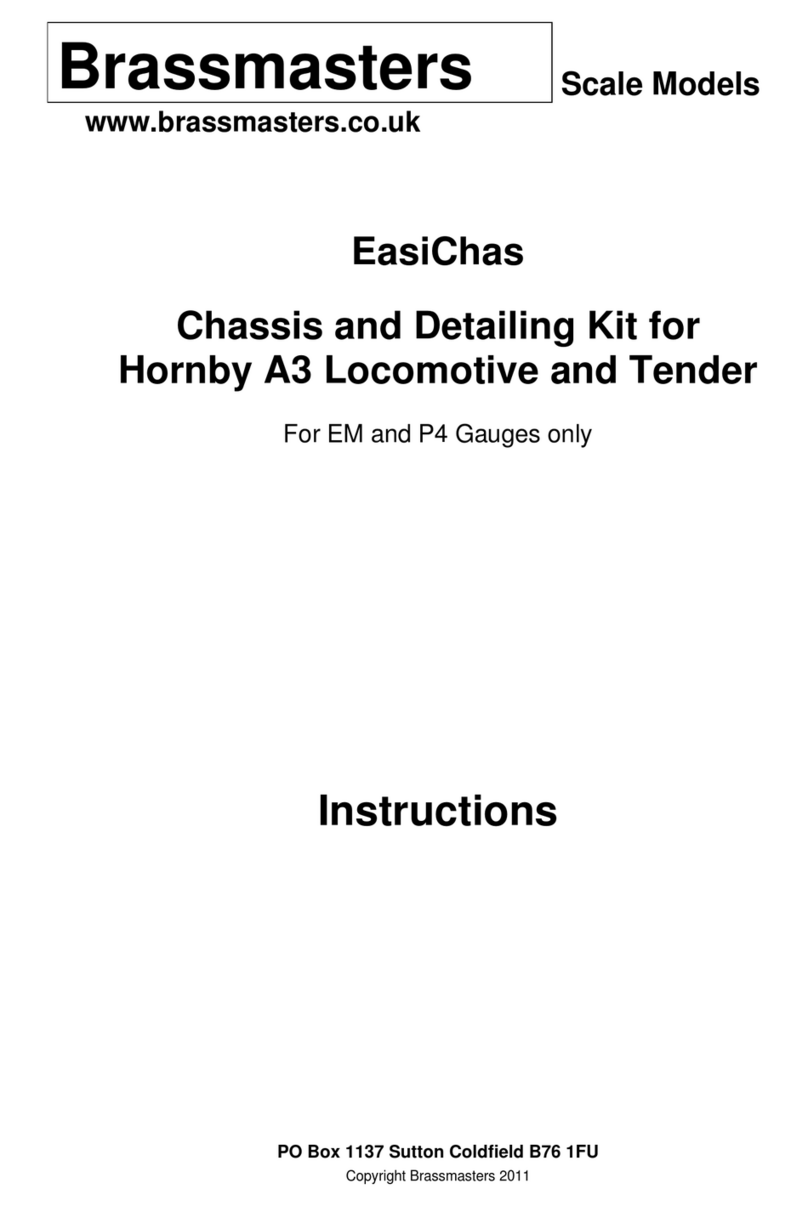
Brassmasters
Brassmasters EasiChas User manual

Brassmasters
Brassmasters LNER V2 2-6-2 User manual

Brassmasters
Brassmasters EasiChas User manual
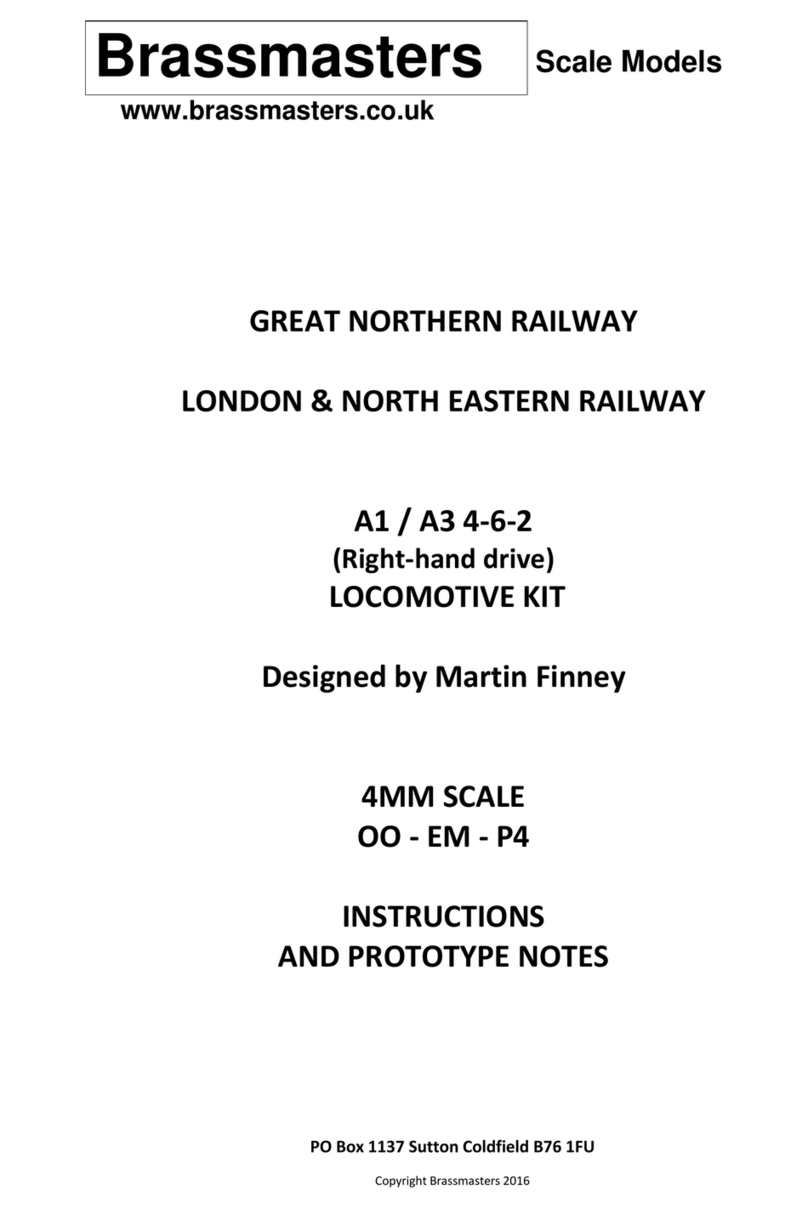
Brassmasters
Brassmasters A1 4-6-2 User manual

